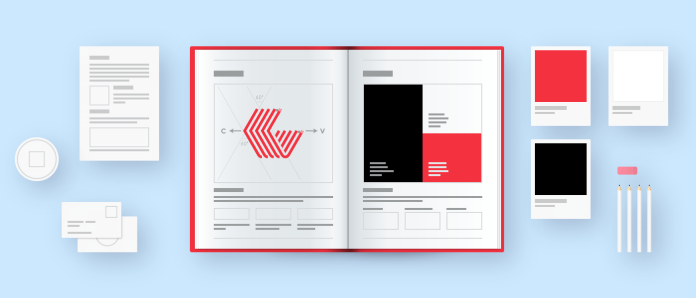Imagine building a brand that instantly grabs attention and doesn’t get lost in the sea of rivals. Sounds like a dream? It doesn’t have to be because certain companies have nailed their branding and marketing to the point where they are undeniably successful. While many factors go into creating a powerful identity, having compelling brand guidelines is key.
Most successful companies have guidelines that followers can easily understand and see through, making them more likely to stick with the company and its products. From packaging to advertising to customer service, these brands are doing everything right. To understand the results of brand guidelines better, check out this overview of some of the top companies out there that follow amazing brand guidelines. You might just get some inspiration for your business!
What are Brand Guidelines?
Brand guidelines are the set of rules that dictate how a company’s brand should be used. These can include everything from the company’s name and logo to its tagline and corporate colors. Brand guidelines ensure that a company’s brand is consistently presented across all channels, allowing it to build recognizability with customers.
While every company’s brand guidelines will be unique, some common elements include an overview of the company’s history and mission, an explanation of the logo and how it should be used, and a color palette. Following these rules lets companies maintain a consistent identity that resonates with their customers and helps them stand out.
One example of brand guidelines is Apple’s “Human Interface Guidelines,” which provide detailed instructions on how developers should create apps for Apple devices. Apple’s identity guidelines cover everything from the design of icons to the use of color and typography. By adhering to these guidelines, developers can create apps that maintain a consistent look and feel across all Apple devices. This, in turn, reinforces the strong association between Apple’s products and quality design.
Another example of brand guidelines comes from Coca-Cola, whose identity guidelines dictate how the Coca-Cola logo should be used, including rules on spacing, sizing, and placement. The guidelines also specify which colors the designers can use in conjunction with the logo and how the logo should be adapted for different media (such as print, digital, or television). Coca-Cola has long maintained a strong and recognizable branding identity by ensuring that its logo is used consistently across all channels.
5 Companies With Impressive Brand Guidelines
Let’s now read how big shots in different niches follow brand guidelines and make themselves recognizable. Ready? Here goes:
- Urban Outfitters
Anyone who’s stepped foot in an Urban Outfitters knows that the store is overflowing with personality. From the carefully curated displays to the eclectic mix of products, the brand has a way of creating an immersive experience that feels both stylish and approachable. But how does Urban Outfitters achieve this?
The brand guidelines this chain follows is the answer to this. While many brands opt for a sleek and minimal aesthetic, Urban Outfitters celebrates quirks and imperfections to their fullest. This is evident in their hand-drawn illustrations, vintage-inspired typography, and distressed textures that look compelling across all touchpoints. Even their logo is designed to look like it was created with a paintbrush instead of a computer – they’re not the first to do it, but surely one of the biggest brands. By embracing these elements, Urban Outfitters has built a visual language that is unique and feels instantly recognizable. As a result, their stores, website, marketing material, and ads always feel like a breath of fresh air – no matter where you come across them.
- Asana
Asana is a project management software that helps teams collaborate on tasks and projects. Asana’s brand design system is anchored in three primary colors: pink, green, and red. This company also uses various colors, including orange, yellow, pink, and red. Since color matters for brand recognition and perception, Asana has nicely played with these catchy hues to develop a mood board that looks lively.
For example, shades of pink and orange are used for Asana’s primary logo, while green is present in its icons and illustrations. Likewise, the purple color is used sparingly, primarily for accent text and buttons. Asana’s use of color is just one element of its comprehensive brand guidelines as it has detailed specifications for typography, iconography, photography, and voice and tone. These elements combine to create a recognizable brand identity that helps Asana stand out in the crowded project management software market.
When you open Instagram, you’ll quickly notice that the platform has a distinct aesthetic. While some of this is because it is primarily a visual medium, much of it also has to do with Instagram’s strict brand guidelines. When it comes to colors, for example, Instagram generally sticks to a muted palette, with lots of white space and minimal use of graphics or other distractions. This creates a clean, stylish look that is immediately recognizable and doesn’t clutter your Instagram interface.
Similarly, the platform’s logo is always presented in an uncluttered way, often just as a wordmark or icon. This logo creates a sense of prestige, which is fitting for a brand that is so popular with celebrities and other high-profile users. These strict yet user-focused brand guidelines have made Instagram one of the most instantly recognizable brands.
One of the main goals of Instagram’s design team is to create a consistent experience for users no matter where they are. To achieve this, they’ve developed a comprehensive set of typefaces, colors, and messaging guidelines that are used across all touchpoints – from the app to marketing materials and merchandise.
These elements create a strong, unified brand that feels familiar and aspirational. For many people, Instagram is a source of daily inspiration – and that’s precisely what the platform’s team strives for with their brand guidelines.
3. Audi
When it comes to luxury cars, one name stands out above the rest: Audi. Audi has been synonymous with quality, innovation, and style for more than a century. But what makes Audi’s brand so special? A significant part of it has to do with the company’s strict brand guidelines. Every element of Audi’s branding – from the logo to the website design – follows a specific set of rules to create a cohesive look that is immediately recognizable. But these guidelines also allow for flexibility, allowing each Audi dealership to put its own spin on the company’s signature style.
Audi’s brand design system is built on the principle of simplicity – its logo is a modern take on the traditional four-ring symbol. Even the company’s name is straightforward and to the point. This commitment to simplicity extends to Audi’s brand guidelines. Audi’s visual identity is based on a limited palette of colors, fonts, and shapes – this restrained approach creates a cohesive look that is both sophisticated and modern. Perhaps more importantly, it allows Audi’s customers to easily identify the company’s products. Whether you’re looking at an advertisement, a car, or a piece of dealership signage, there’s no mistaking that it belongs to Audi. And that’s exactly what a strong brand design system should achieve.
- Netflix
Unlike many big names in the entertainment industry, Netflix’s brand guidelines are focused on simplicity. Its logo is a wordmark with a very clean, sans serif font, and the primary colors in it are black to give it a sleek look.
If we talk about Netflix’s branding, less is definitely more. This approach conveys a message of sophistication and tells consumers that Netflix is a powerful and streamlined brand that knows what it entails. This brand personality is reflected in the company’s award-winning content. Netflix’s original programming is often dark and complex, inviting viewers to explore the depths of the human experience. This bold approach to storytelling has truly made Netflix a unique entertainment name, and its brand guidelines are admired for their clutter-free layout.
- Spotify
Spotify, a music streaming app known for its user-friendly interface and wide selection of songs, has built a strong identity reflected in its brand guidelines. Spotify’s logo is a green circle with a white line in the middle, which represents a speaker. This simple yet recognizable logo can be seen on the Spotify website, app, and social media pages.
Spotify’s color palette includes green, black, white, and grey used in the Spotify app interface and branding materials. Spotify’s typography includes various sans-serif fonts such as Arial and Helvetica. The company’s slogan, “Music for everyone,” is featured prominently on its website and marketing materials. These streamlined brand guidelines ensure that Spotify’s branding is consistent across all platforms.
Summing Up
While every company’s branding guidelines will be different, there are some common elements that all successful guidelines share. First and foremost, effective brand guidelines must be concise and easy for everyone to understand. Likewise, successful brand guidelines are flexible enough to allow for creativity and innovation within the bounds of the company’s message. These rules should be continuously updated and relevant to the ever-changing landscape of the business world. Following these simple tenets can help any company develop its identity and succeed.









